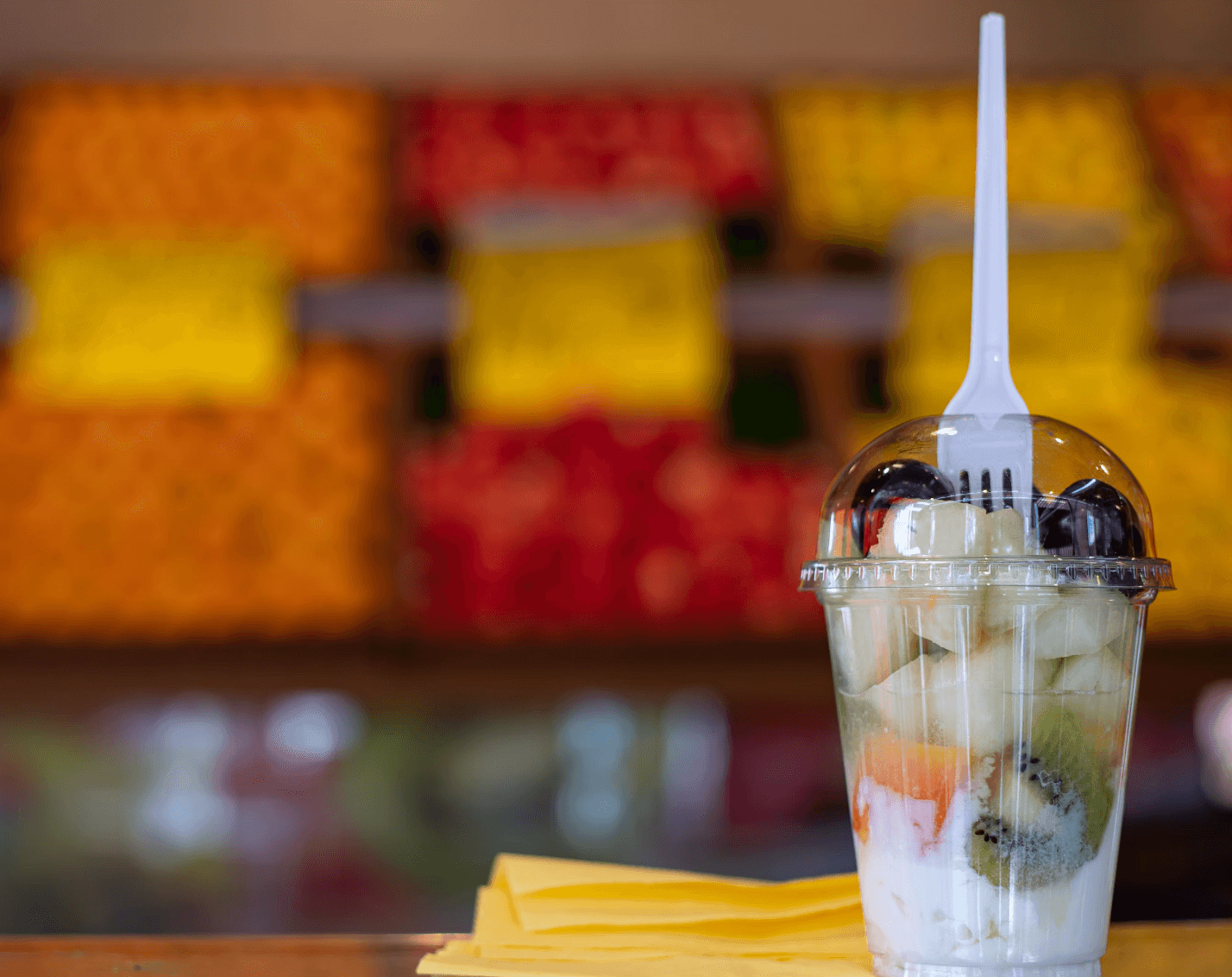
지금 문의하기
PLA vs. PET Cups: Which is Better for You and the Environment?
In a world increasingly conscious of environmental impacts, the choices we make in our everyday products matter more than ever. One area that has garnered significant attention is the type of materials used for disposable cups. Among the most common materials are PLA (Polylactic Acid) and PET (Polyethylene Terephthalate). But what exactly sets these two apart? In this blog, we’ll dive into the key differences between PLA and PET cups, helping you make an informed choice for your needs.
A Quick Overview of PLA and PET
PLA (Polylactic Acid):
PLA is a biodegradable plastic derived from renewable resources like corn starch or sugarcane. It is often touted as an eco-friendly alternative to traditional plastics due to its ability to decompose under industrial composting conditions. PLA is commonly used in a variety of products, including disposable cups, food packaging, and even medical devices.
PET (Polyethylene Terephthalate):
PET is a type of plastic made from petroleum-based materials. It is widely used in the packaging industry due to its strength, durability, and recyclability. PET is the material of choice for many beverage bottles, food containers, and other consumer goods.
Key Differences Between PLA and PET Cups
1. Environmental Impact
- PLA Cups:
PLA’s main advantage is its biodegradable nature. Under the right conditions, PLA can break down into carbon dioxide and water within a few months to a couple of years. However, it requires industrial composting facilities to do so, which are not always readily available. Despite this, PLA’s reliance on renewable resources makes it a more sustainable option compared to petroleum-based plastics. - PET Cups:
PET, on the other hand, is not biodegradable but is highly recyclable. PET can be recycled multiple times without losing its properties, making it a valuable material in the recycling industry. However, the process of recycling PET can be energy-intensive, and not all PET products end up being recycled due to contamination or lack of proper recycling facilities.
2. Durability and Performance
- PLA Cups:
PLA cups are suitable for cold beverages as they tend to lose their structural integrity at higher temperatures. They are less durable compared to PET cups and can become brittle in colder environments. PLA is also less resistant to impact and can crack or break more easily. - PET Cups:
PET cups are known for their robustness and durability. They can withstand a wide range of temperatures and are resistant to impact, making them ideal for both hot and cold beverages. PET’s clarity and strength are superior to PLA, providing a better user experience in terms of appearance and reliability.
3. Cost and Availability
- PLA Cups:
The production of PLA is generally more expensive than PET due to the costs associated with sourcing and processing renewable materials. As a result, PLA cups can be more costly for consumers. Additionally, the availability of PLA cups can be limited compared to PET, particularly in regions without access to industrial composting facilities. - PET Cups:
PET is widely available and cost-effective due to its established manufacturing processes and the abundance of petroleum-based resources. This widespread availability and lower cost make PET cups a popular choice for many businesses and consumers.
4. End-of-Life Disposal
- PLA Cups:
For PLA cups to be effectively composted, they need to be disposed of in industrial composting facilities that maintain specific conditions of temperature and humidity. Unfortunately, such facilities are not widespread, leading to many PLA products ending up in landfills where they do not decompose efficiently. - PET Cups:
PET’s recyclability is a significant advantage. If properly sorted and cleaned, PET cups can be recycled into new products, reducing the need for virgin materials and minimizing waste. However, the effectiveness of PET recycling depends heavily on consumer behavior and the availability of efficient recycling systems.
Making the Right Choice
When choosing between PLA and PET cups, it’s essential to consider your specific needs and the environmental impact of each material. For events and locations with access to industrial composting, PLA cups might be the more sustainable option. However, for general use where recycling facilities are readily available, PET cups offer durability and recyclability benefits.
Current data highlights that approximately 14% of plastic packaging globally is collected for recycling, but only 5% is actually recycled into new packaging of the same quality. This underscores the importance of proper waste management systems and consumer education in making environmentally friendly choices.
In conclusion, both PLA and PET have their pros and cons. PLA offers a renewable, biodegradable option, ideal for specific composting environments. PET provides a durable, recyclable alternative suitable for a broader range of uses. By understanding these differences, consumers and businesses can make informed decisions that align with their environmental values and practical needs.
For those seeking environmentally friendly options without compromising on durability and quality, Jkai produces a variety of eco-friendly PET cups and lids in different sizes. Custom logos and designs are available to meet your specific needs. If you’re interested, don’t hesitate to reach out for more information and to explore how Jkai can cater to your requirements.

